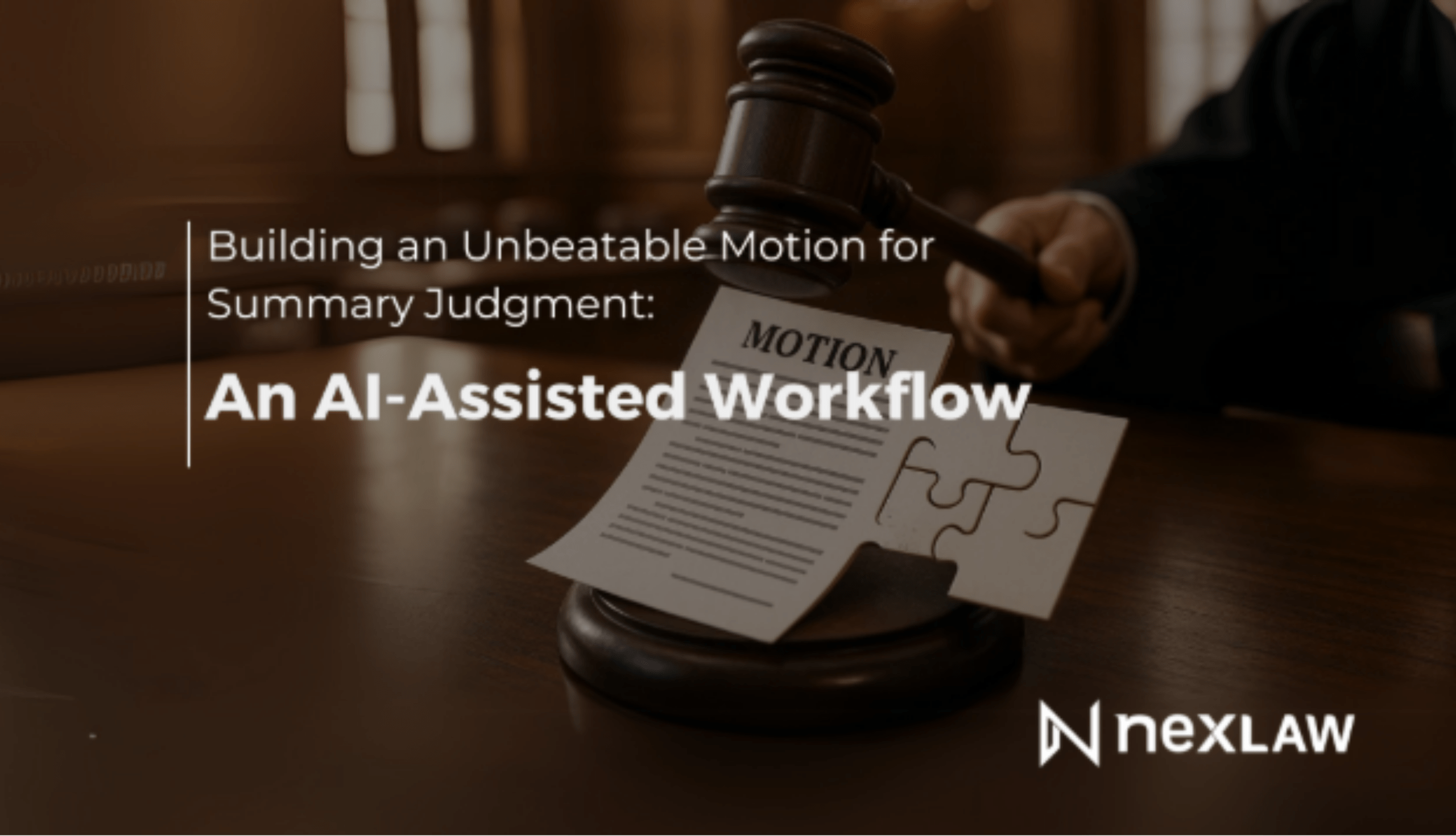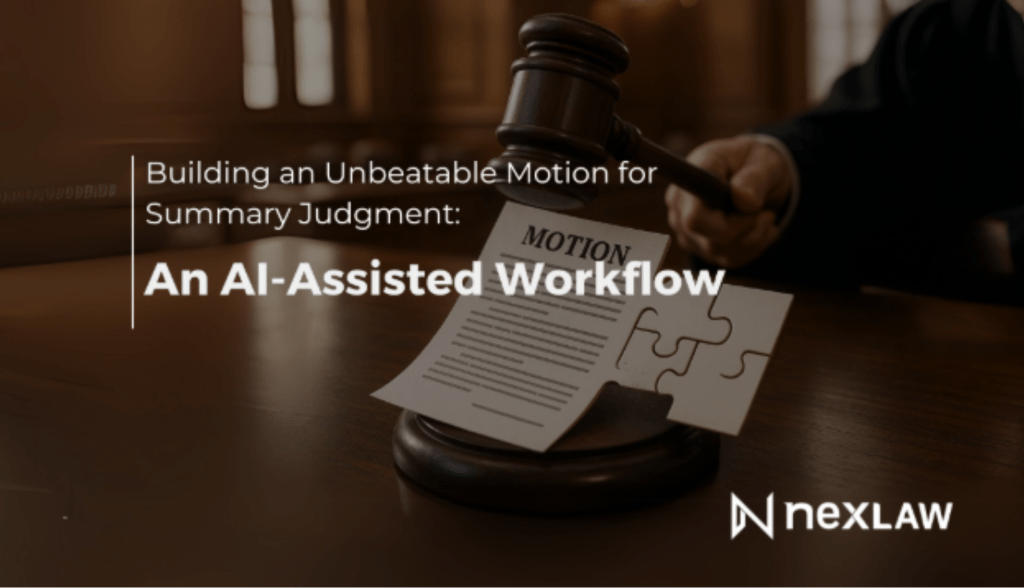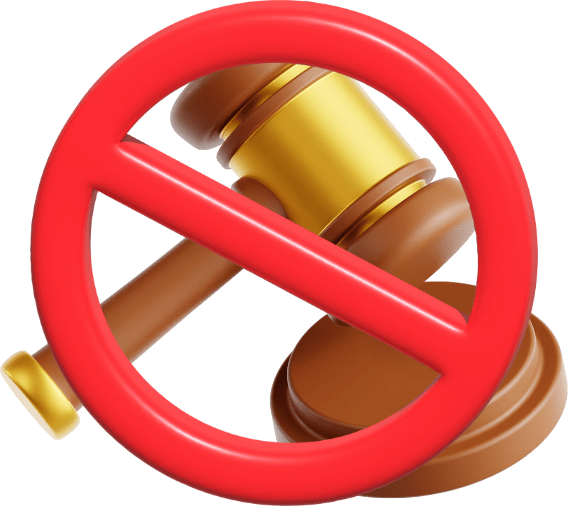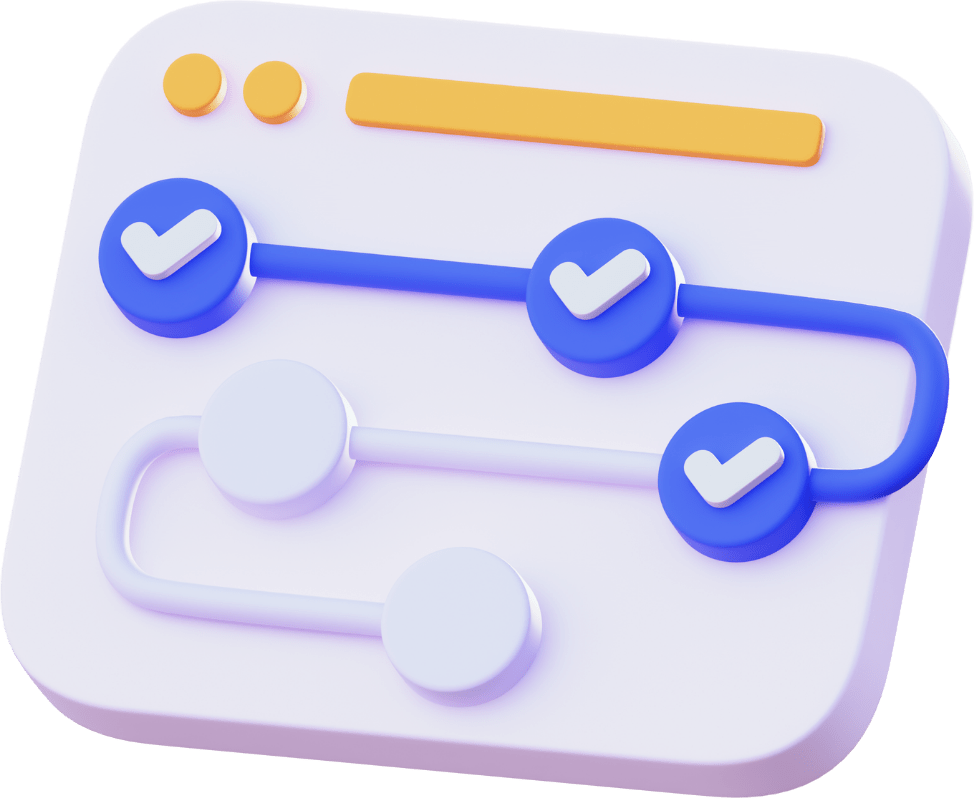Building an Unbeatable Motion for Summary Judgment: An AI-Assisted Workflow

Building an Unbeatable Motion for Summary Judgment: An AI- Assisted Workflow

A successful Motion for Summary Judgment can be a case-dispositive event, saving your client the immense cost and uncertainty of a trial. However, crafting a winning motion is one of the most demanding tasks in U.S. litigation. It requires a masterful blend of factual evidence and legal precedent, woven together to demonstrate that there is “no genuine dispute as to any material fact.” A 2025 analysis of federal court data showed that nearly 60% of summary judgment motions are denied, often due to insufficient evidentiary support or a failure to properly apply the controlling law. This is where a dedicated Litigation AI assistant becomes an indispensable strategic partner, helping you build a more persuasive, evidence-backed, and ultimately successful motion.
This guide provides a step-by-step workflow for leveraging a platform like NexLaw AI to construct a powerful Motion for Summary Judgment.
Why Summary Judgment Motions Fail: The Common Pitfalls
Motions for summary judgment are not denied because of a single typo; they fail for substantive reasons. The most common pitfalls include:

Insufficient Factual Support:
Failing to connect every legal assertion to a specific piece of undisputed evidence in the record (e.g., a deposition excerpt, an affidavit or a response to a request for admission).

Misapplication of Legal Standards:
Citing case law that is not directly on point or failing to address the specific nuances of the controlling legal standard in that jurisdiction.

Narrative Gaps:
Presenting a collection of facts and legal arguments that fail to form a coherent, persuasive narrative that guides the judge to the desired conclusion.

Failure to Anticipate Opposing Arguments:
Not proactively addressing the arguments and evidence that the opposing party is likely to raise in their opposition brief.
The AI Advantage: From Factual Foundation to Persuasive Narrative
A sophisticated AI Legal Assistant is designed to address each of these pitfalls directly. It acts as your analytical companion, helping you organize evidence, pinpoint the most relevant legal precedents and structure your argument for maximum impact. Unlike generic AI tools that can “hallucinate” fake cases, a professional legal AI platform operates on a verified database of legal information, ensuring every citation is accurate and every legal standard is correctly identified. This allows you to move beyond simply drafting a motion to strategically engineering an argument designed to win.

Act now to transform your
practice and achieve your goals.
See NexLaw in Action
Start your free trial and kick off your legal AI journey with a personalized demo
*By submitting the form, you agree to the Terms of Service and Privacy Policy
A Step-by-Step Workflow with NexLaw AI
Crafting a winning motion with AI is a process of augmented intelligence, where technology enhances your legal expertise at every stage.
- The foundation of any summary judgment motion is an undisputed factual record. With NexLaw AI’s ChronoVault, you can upload all discovery materials such as depositions, interrogatory responses and produced documents.
- The AI automatically creates an interactive timeline and extracts key facts, linking each fact directly to its source document. This creates a powerful, searchable repository of your undisputed evidence, ready to be deployed in your motion.

Step 2: Pinpointing Controlling Law with NeXa
- With the facts organized, the next step is to find the precise legal authority that governs your case.
- Using NeXa, NexLaw’s conversational AI research assistant, you can ask specific questions like, “In the Eleventh Circuit, what are the key elements to prove for a summary judgment motion in a trade secret misappropriation case?”
- NeXa will provide a concise summary of the controlling law and the landmark cases, saving you hours of traditional research and ensuring your argument is built on a solid legal foundation.

Step 3: Structuring the Argument with the AI Legal Writer
This is where the facts and the law come together. NexLaw’s AI Legal Writer assists you in drafting the motion by:
- Generating a Structured Outline: The AI can create a logical outline for your brief, ensuring all necessary sections (Statement of Undisputed Facts, Legal Standard, Argument) are included.
- Integrating Evidence Seamlessly: As you draft your Statement of Undisputed Facts, the AI can prompt you to cite directly to the evidence stored in ChronoVault, embedding links to the source documents to create a powerful, easily verifiable record for the judge.
- Applying Law to Facts: In the Argument section, the AI helps you weave together the legal precedents from NeXa with the specific facts of your case, constructing persuasive, well-supported legal arguments.

Step 4: Anticipating and Rebutting Counterarguments
- A strong motion anticipates the opposition.
- The AI can analyze the opposing party’s pleadings and discovery responses to identify their likely counterarguments. It can then help you find case law to rebut those positions proactively, strengthening your motion and demonstrating to the court that you have considered all sides of the issue.

Case Study: A Premises Liability Case
Imagine a lawyer defending a retail store in a “slip and fall” case. The plaintiff claims the store had constructive notice of a spill. The lawyer uses NexLaw AI to prepare a Motion for Summary Judgment. ChronoVault organizes security camera footage, cleaning logs and employee depositions, creating a timeline showing the floor was inspected just 10 minutes before the fall. NeXa provides case law from that specific jurisdiction defining “constructive notice” and establishing that a 10-minute window is insufficient. The AI Legal Writer helps draft the motion, seamlessly integrating screenshots from the video footage and excerpts from the depositions into the Statement of Undisputed Facts. The motion is granted, saving the client from a potentially expensive trial. The entire process took less than 10 hours, compared to an estimated 30-40 hours for manual preparation.
A New Standard for Motion Practice
In today’s competitive legal environment, efficiency and precision are paramount. A Litigation AI assistant is no longer a futuristic concept; it’s a practical tool that empowers you to produce higher-quality work product in less time. By automating the laborious tasks of evidence organization and legal research, AI frees you to focus on the high-level strategic thinking that wins cases.
Don’t let your next Motion for Summary Judgment become another statistic. It’s time to leverage the power of AI to build an unbeatable argument.
Ready to elevate your motion practice?
Book a Personalized Demo to see how NexLaw AI can help you craft winning summary judgment motions.
Explore Our Plans and discover the powerful ROI of integrating an AI co-counsel into your workflow.
Interested In Features Like This?
Receive complimentary access to our resources and a personalized live demo tailored to your needs.


